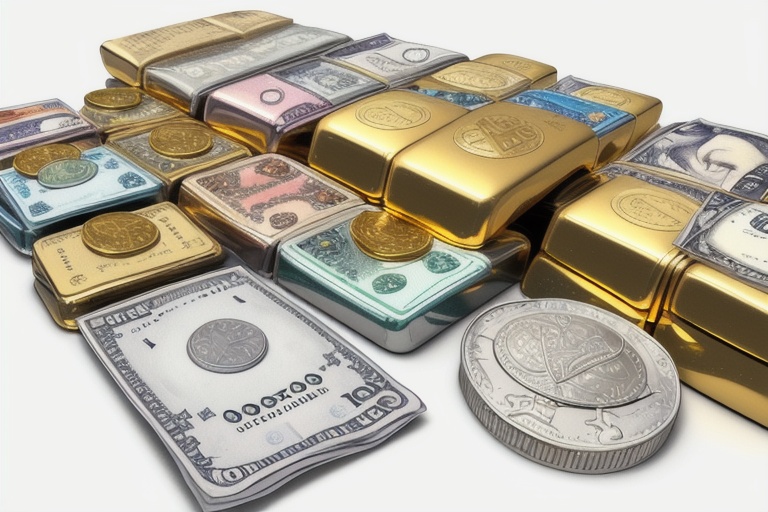Navigating the realm of coin collecting and valuation can be an intriguing challenge for investors and collectors alike. Striking a balance between the allure of bullion coins and the historical richness of numismatic collections is a fundamental choice that requires thoughtful consideration. In this exploration, we will delve into the nuances that distinguish bullion from numismatic coins, and how these attributes align with investment strategies and collector values.
Navigating the realm of coin collecting and valuation can be an intriguing challenge for investors and collectors alike. Striking a balance between the allure of bullion coins and the historical richness of numismatic collections is a fundamental choice that requires thoughtful consideration. In this exploration, we will delve into the nuances that distinguish bullion from numismatic coins, and how these attributes align with investment strategies and collector values.
Understanding Bullion Coins
Bullion coins are primarily valued for their content of precious metals—such as gold and silver—and their price is directly influenced by these metals' market value. Investors often favor bullion coins for their liquidity and relatively lower premiums over spot prices compared to numismatic coins. Typically, these are modern coins that have been minted in large quantities and are available in various weights, with the 1-ounce denomination being particularly prevalent in the market.
While bullion coins are not generally rare or unique, their worth is secured by the intrinsic value of their metal content. This makes them a robust option for those seeking a conservative investment that retains value over time, especially in uncertain economic climates where the allure of tangible assets becomes more pronounced.
The Allure of Numismatic Coins
Numismatic coins, in contrast, are cherished for their rarity, historical significance, and the demand among collectors. They often date back to different periods and can include ancient, medieval, or modern coins that are no longer in widespread circulation. The value of numismatic coins stretches beyond the metal content, encompassing factors such as condition, provenance, and scarcity. Consequently, these coins can carry a significant premium over their intrinsic metal value.
However, with greater potential rewards comes greater risk. The worth of numismatic coins is more volatile as it relies on market trends and the collector demand, which can fluctuate. Collectors who have an intricate knowledge of the coin market and its historical context may find more significant opportunities with numismatic coins. But for those with less experience or a lower appetite for risk, the variability in this market could pose challenges.
Investment Goals and Risk Tolerance
When pondering the choice between bullion and numismatic coins, it's essential to reflect on one's investment objectives and risk tolerance. Investors who prioritize stability and a secure foundation may gravitate towards bullion coins due to their consistent value tied to precious metal prices.
Alternatively, those with a penchant for history and culture might prefer the depth and complexity of numismatic coins, acknowledging the potential for remarkable returns, but also the necessity for a more nuanced approach due to market unpredictability.
Strategic Acquisitions: Considering Bulk Purchases
Sophisticated investors often consider bulk purchases, such as acquiring Monster Boxes, which contain sealed tubes of bullion coins directly from the mint. These large-volume acquisitions allow investors to take advantage of economies of scale, securing a lower premium and overall cost per coin. This strategy doesn't just reduce initial investment outlays but also amplifies the potential for profitability when market prices for precious metals rise.
The Role of Demand in Coin Values
It is crucial to underscore that while bullion coins are predominantly appraised based on their metal content, numismatic coins hinge substantially on collector interest and market momentum. Keeping an eye on collector demand shifts and market trends allows astute investors to navigate the numismatic landscape effectively.
Bullion Coins: A Sturdy Investment
For those seeking a reliable investment, bullion coins present a firm option anchored in the assurance of their precious metal content and liquidity. The straightforward valuation of bullion coins provides an accessible entry point for new investors, along with a transparent market that's relatively easy to follow.
Concluding Thoughts
In the diverse world of coin collecting and valuation, the choice between bullion and numismatic coins comes down to investor preference and goals. It's imperative for collectors and investors to understand the intrinsic differences between these two coin types, and to methodologically assess each option against their investment strategy. By prioritizing factors such as stability, potential for appreciation, and market dynamics, one can embark on an investment journey that not only enhances their portfolio but also enriches their appreciation for this timeless pursuit.
Whether drawn to the safe-haven appeal of bullion or the intriguing narratives of numismatic coins, the key lies in informed decision-making. Ensuring alignment with one's objectives and possessing a clear vision of the desired outcomes will pave the way for successful and rewarding investments in the fascinating domain of coins.
Information for this article was gathered from the following source.




